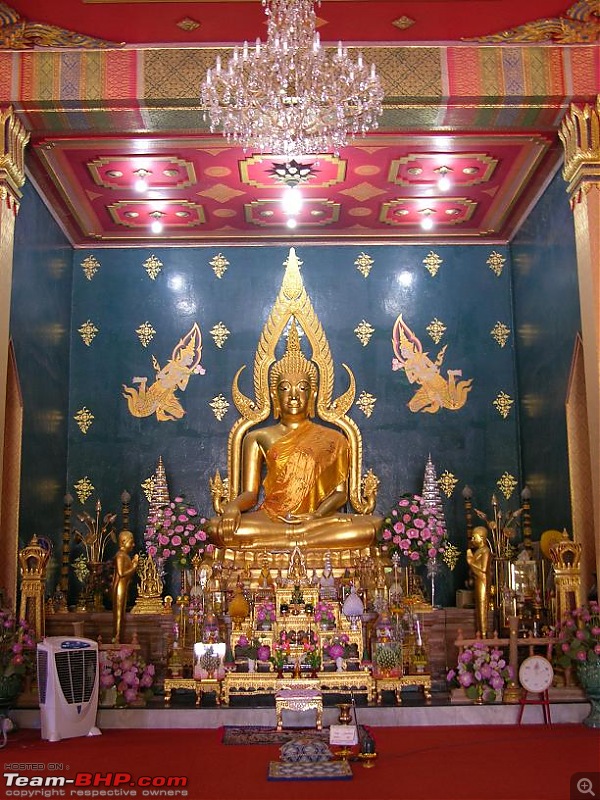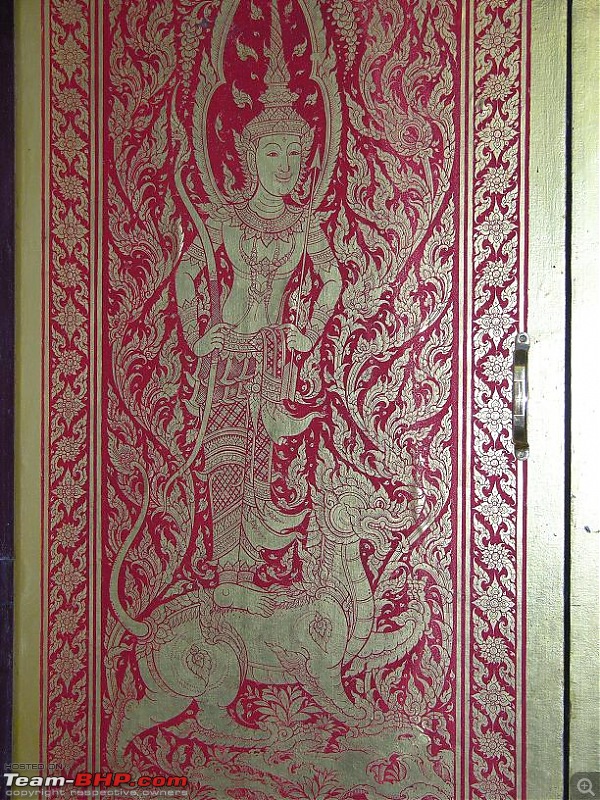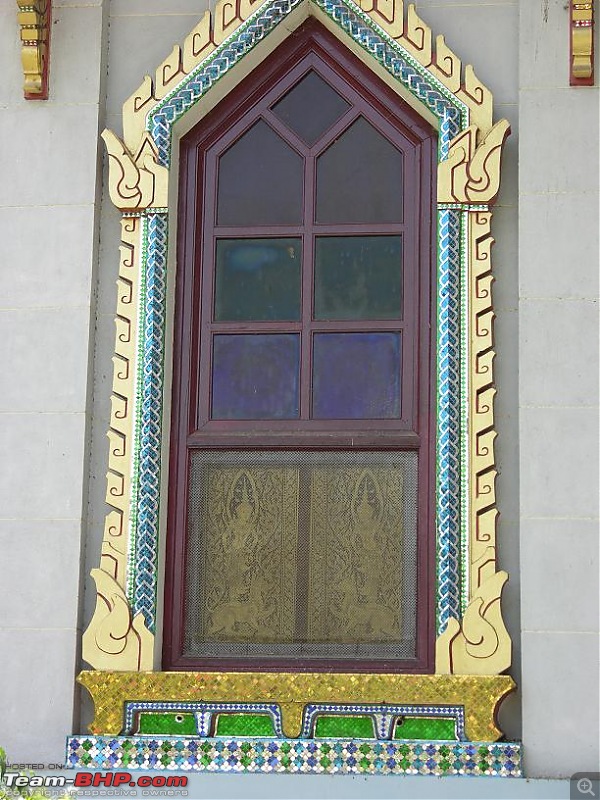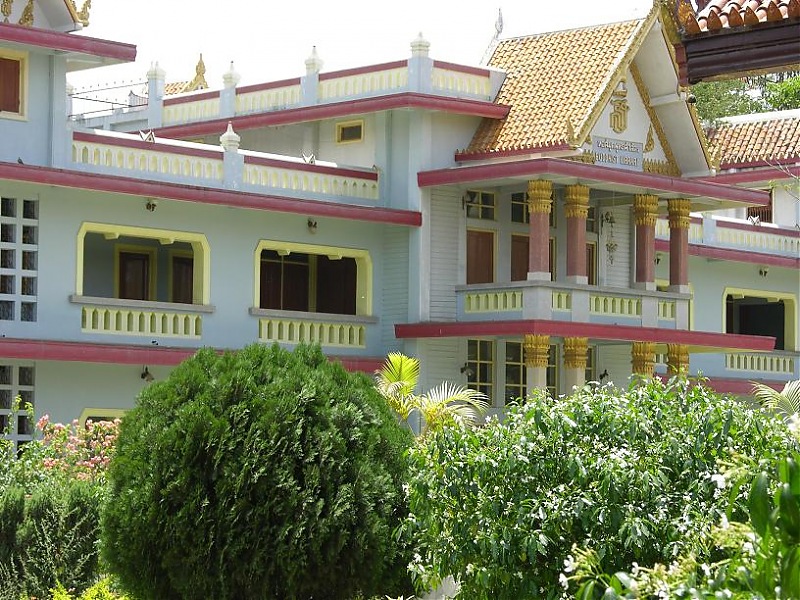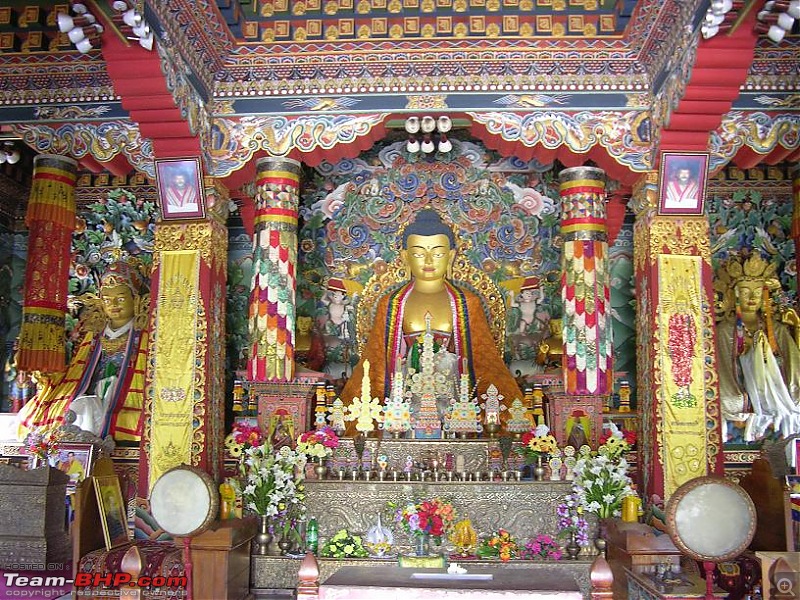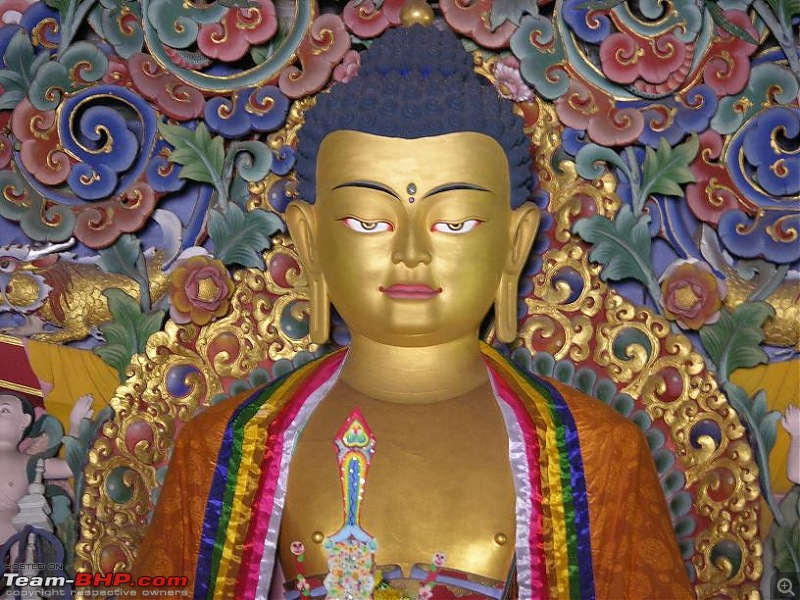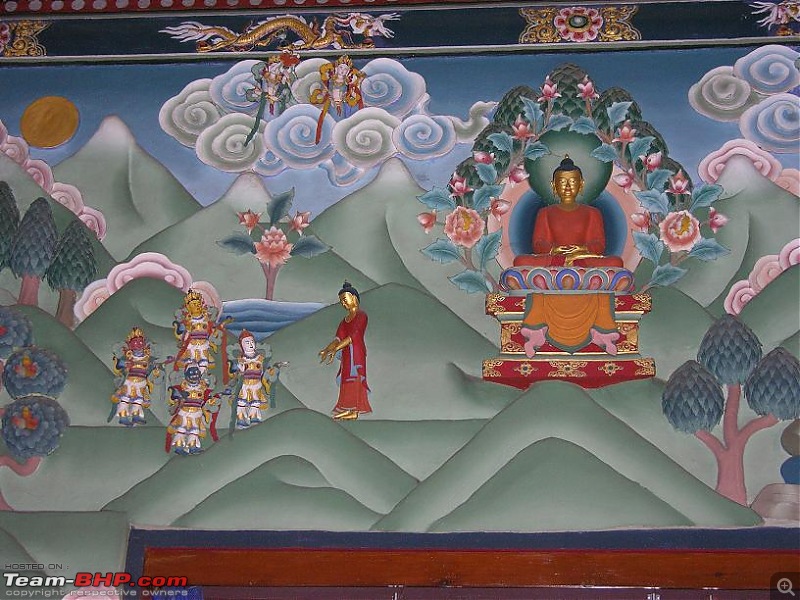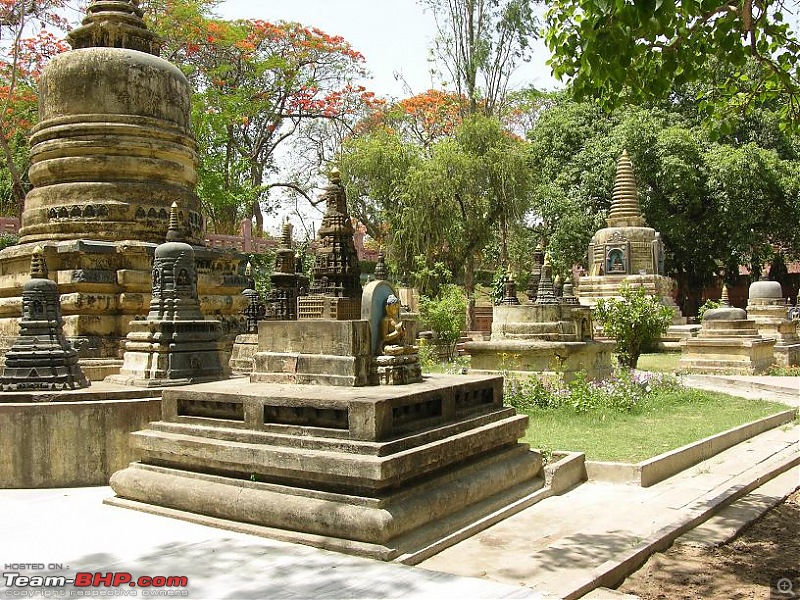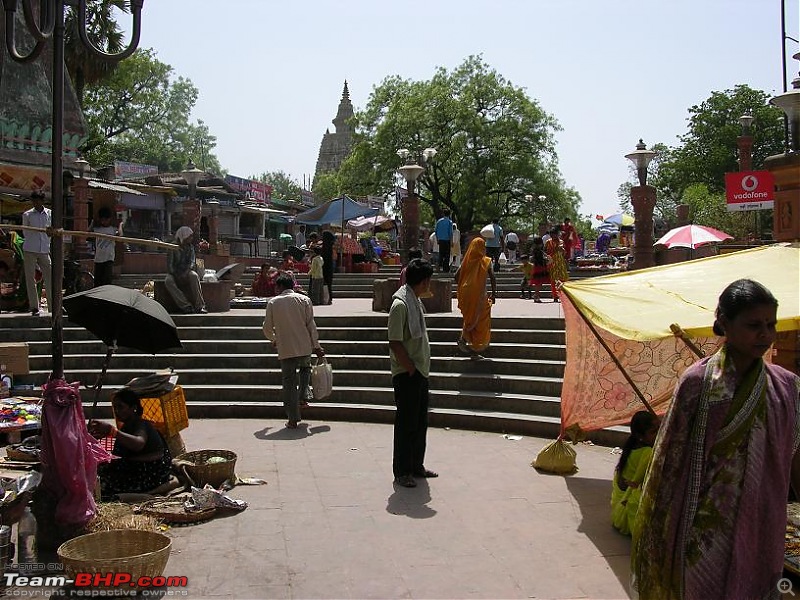The expanse of Bodh Gaya is just 1.5 kilometer in length and less than 1.0 kilometer in width. It took us less than 10 minutes to reach the Mahabodhi temple from the Bhutanese monastery. The temple area is well maintained by the Bihar Government. The World Heritage Status has its advantages.
You can see the gates on the right
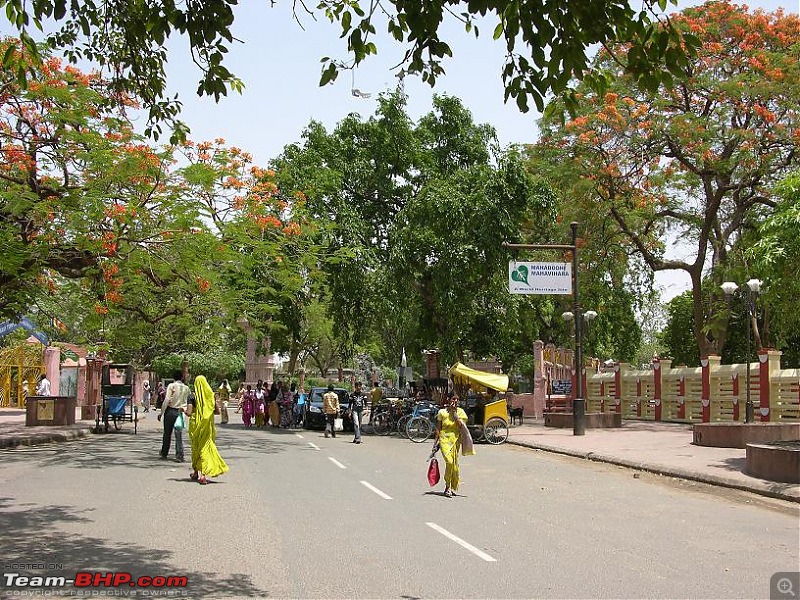
As you can see, there were almost no tourists who would brave the summer noon heat of the Mahabodhi temple. A few people that you see are all locals crossing between north and south gates.

After you enter the gate, the temple is towards your right

Let me tell you this, no amount of pictures, description, or history can prepare you for the grandeur of the Mahabodhi temple. I too had seen the temple in pictures and had read extensively before arriving, but when I was in front of the temple, I was taken aback by the beauty and serenity. Frankly speaking, I realized it’s dauntingly hot only after we came out for lunch. And from three hours that we were inside the temple complex, we were inside the sanctorum only for couple of minutes.

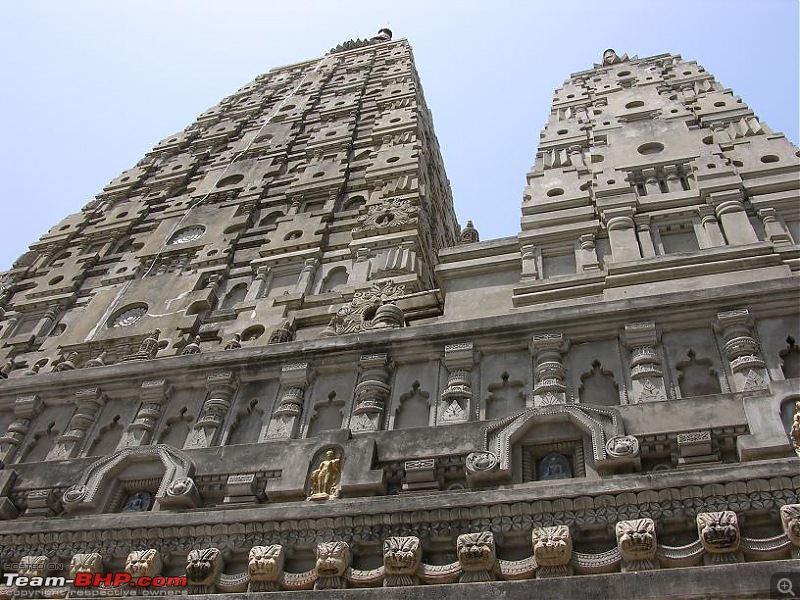

The history of Mahabodhi temple is extremely checkered. At around 5th century BCE, Siddharth Gautam found his enlightenment at this place underneath a Pipal tree and became Gautam Buddha. For almost 800 years, the main object of veneration at this site was the Pipal tree and perhaps the seat of Buddha (also called as Vajrasana). It may have been between 2nd century and 5th century CE that the object of veneration would have shifted to a temple and most probably to Buddha. Actually I am yet to come across any Buddha idol dating prior to 2nd century CE. The earliest Buddha idol found from the Mahabodhi temple site is from 4th century CE and is presently in Kolkata museum.
The precursor to present day Mahabodhi temple would have been in place by 6th Century CE. This can be corroborated by the travelogue left by Chinese pilgrim Xuanzang (early 7th century CE) and also some Sinhalese inscriptions of Mahanaman dated 588/89 CE. Xuanzang observed in his travelogue that to the east of Mahabodhi tree, there’s a vihara measuring between 49 to 52 meters. The height of vihara of present day temple is around 50 meters.
Temple as seen today has undergone substantial repairs during late 19th century CE. Sir Alexander Cunningham (a British archaeologist) who is considered to the father of ASI is also considered to be the architect of the extensive renovation that the temple has undergone. I have zoomed into one of the niches of the vihara and you can see a broken idol which indicates the nature of repair. You can make various such cites.

The Mahabodhi tree that we see today is considered to be 5th incarnation of the original tree. The original tree has been desecrated 3 times. 4th time the tree died a natural death in 1876. It was replaced by a sapling generated from a seed of old tree and planted at the same location. But today, it has bloomed to magnificence.


You get unbelievably serene feeling under this Pipal tree. The location of the original Pipal tree could have been where Buddha’s idol is seated today (inside the temple sanctorum).

The Buddha’s idol dates to 9th or 10th century CE (Pala dynasty). It’s actually a black stone image, painted the way it appears in the picture above.
The earliest monument at the Mahabodhi temple is the slab belonging from Ashoka’s reign. The slab is placed at Buddha’s seat underneath the Mahabodhi tree.

The metal grill placed around the Mahabodhi tree obstructs the view of Vajrasana and the Vajrasana itself remains covered with a silk cloth.
The other monument that is believed from Ashoka’s period is a pillar discovered standing south of the Mahabodhi temple just outside the Muchilinda lake.
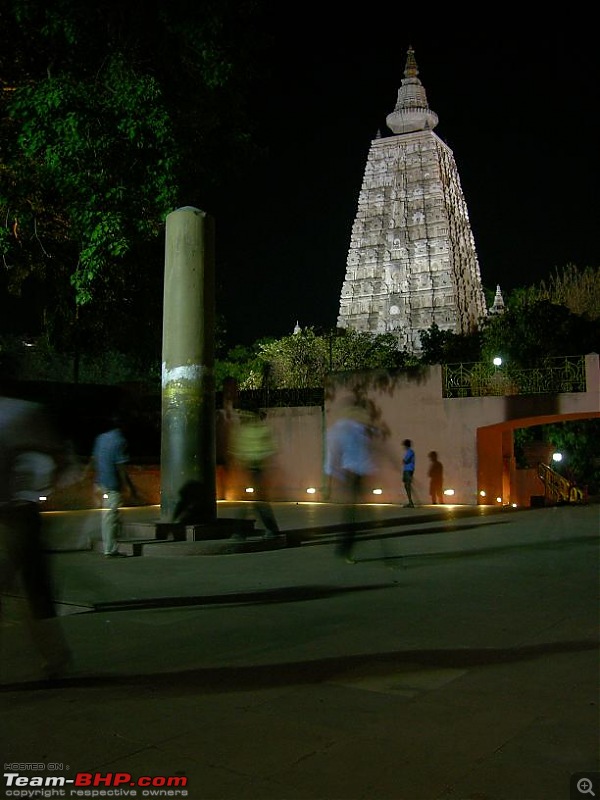
Then come the stone railing enclosing the Mahabodhi temple. The stone railing have been identified as belonging to Shunga period (185-72 BCE). Originally this railing might have been built to enclose the Mahabodhi tree. But the area was large enough to have the temple enclosed as well.
The stone railing generally depicts decorative elements, but some of them have Buddha’s life events engraved.



Some historians believe that the face images may be of the people who donated the respective railing.



Some of the interesting depictions (including one railing depicting Shiva with a trident) has been moved to Bodh Gaya ASI museum.

All the images that you see around in the first peripheral row are works of Pala dynasty dating between 8th and 10th centuries CE. In the original temple, there were stucco images that have completely eroded. During the 19th century restoration, the stucco images were replaced with these black stone images and painted golden. The images are that of Buddha, Bodhisattva(s) and gods from Buddhist pantheon.
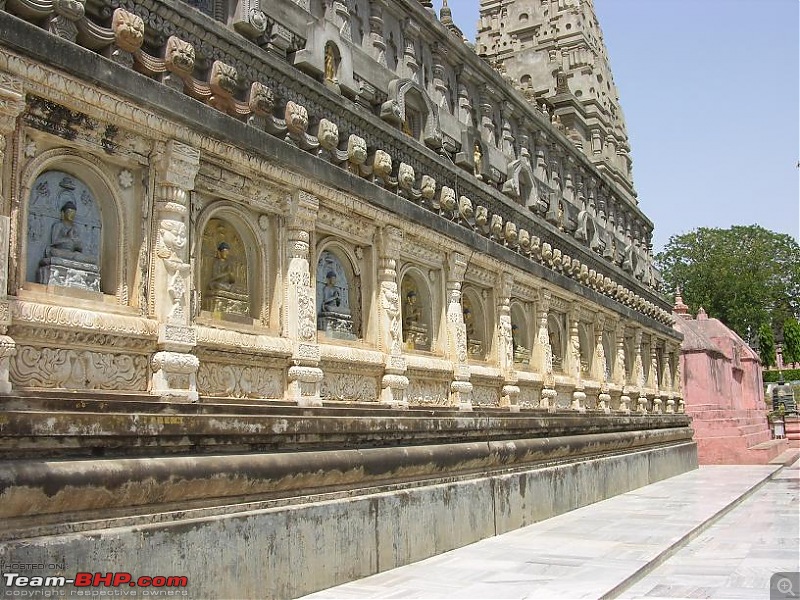





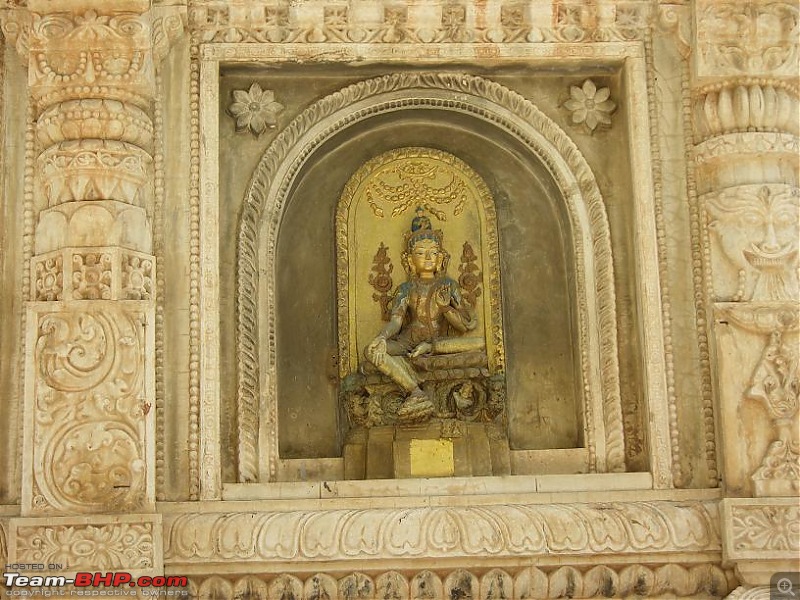 To be continued…
To be continued… (1)
Thanks
(1)
Thanks
 (1)
Thanks
(1)
Thanks










 .
.



